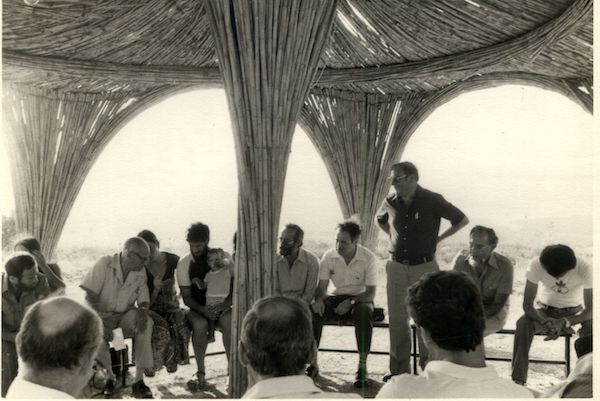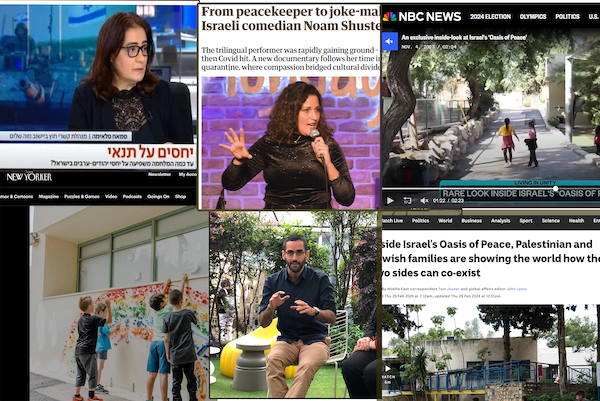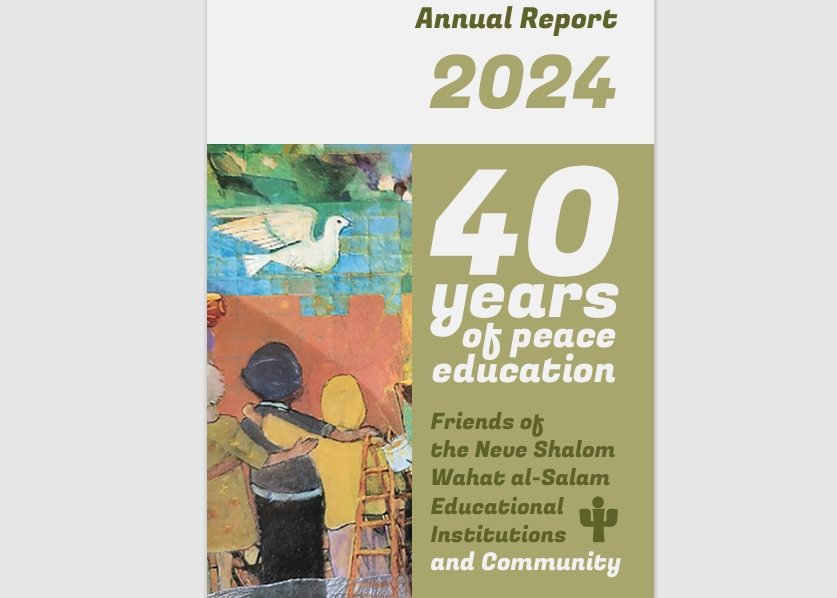With a small group of people, Bruno Hussar settled in the ruins of a Crusader fortress near the Latrun abbey. Later, they relocated to the nearby Ras Abu Morah hilltop, on land leased to them for a symbolic fee for 49 years, with an option to renew for the next 49.
The first meetings of village residents took place in the “sukka” – an open-air reed hut.
The hilltop was barren in the summer, muddy in the winter. It is situated in no-man’s land, on land that straddles the so-called green line separating pre-1967 Israel from Palestine. The Israeli government recognized the settlement, but, as it did not fit any category, it offered no aid or assistance. The new WASNS members had to build everything themselves, from the first small, prefab homes, to bringing in water and electricity, to planting trees and gardens.
Hussar, in the meantime, worked tirelessly to obtain support for the new community. The first Friends Association – in Germany – was established in 1975.
By the late 1970s and early 1980s, families were taking up permanent residence. They were also having children, and this raised a new issue: How would they school their children in a binational format, teaching them peace? Furthermore, how would they spread the word about people learning to live together in peace and increase the impact of their activities?
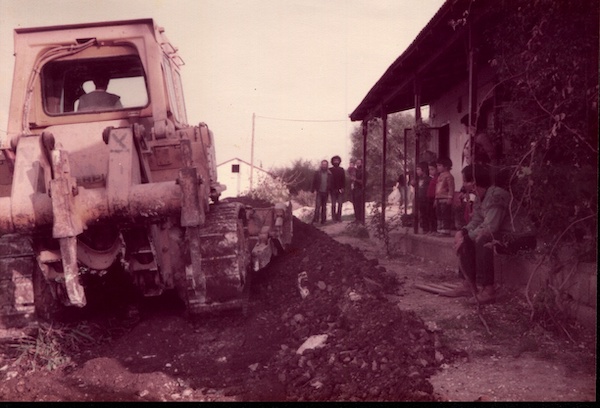
The School for Peace was founded in 1979, and it offered its first course – facilitator training. From the beginning, its founders began to develop the dialogue method still used today, and they invited Palestinians and Jews from all over the country to participate.
The first child was also born that year, and, in 1980, the country’s first bilingual nursery was established. This nursery would lay the foundations for the continuing binational educational system, in which the staff would be comprised of an equal number of Arabs and Jews and two languages would be spoken equally.
construction of classrooms for the School for Peace
In the same year, with help from the German Friends, a 40-bed hostel was established, originally to provide rooms for participants in School for Peace workshops and seminars.
In 1983, the Doumia/Sakina, or corner of silence, was established, as a place for meditation and spiritual reflection, as well as a corner where three religions could meet. This would later become the Pluralistic Spiritual Community Center.
Middle years
In 1984, as the Swiss Friends Association joined the German Friends, the Association of Educational Institutions was formed. The Association would eventually be formally separated from the Municipal Society, enabling the Institutions to function independently, and the Friends Association and board of the Association to garner support for these institutions.
At the same time, the bilingual, binational primary school opened in the village. This school – the first of its kind in the country — was originally intended for village children, alone, and the school staff developed their own teaching curriculum. From the beginning, the emphasis was on communication, individual identities, respect for others and learning about the others with whom they shared their home.
Israel’s president, Chaim Herzog, visited the school that year.
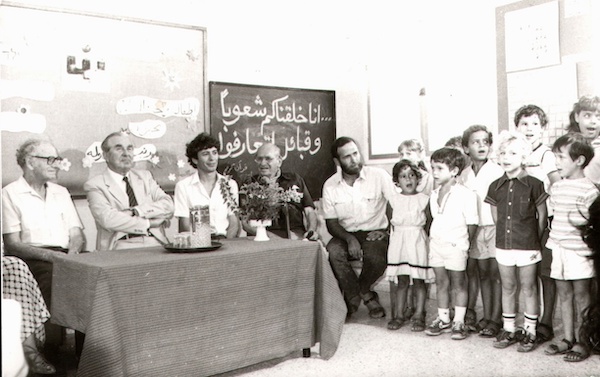
Israel’s President Herzog, during a visit to the Primary School in 1984.
The village also began holding open days. The first open day, in 1985, brought 5,000 Palestinians and Jews to enjoy music and visit the village. The second one, held in 1987, brought 20,000 to the village.
The Open Day of 1987 – thousands of people crowd into the village’s natural auditorium
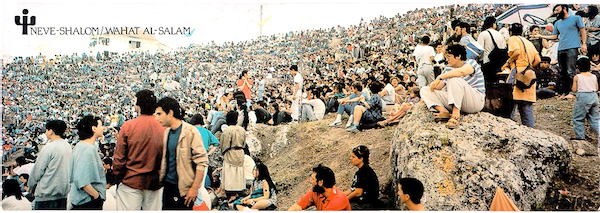
In the early 1990s, the hostel was converted into a 40-room hotel. Visitors from Israel and abroad came to enjoy the peace and quiet, as well as the beautiful scenery and a chance to stay in the Oasis of Peace.
The Doumia/Sakina was expanded into the Spiritual Center in memory of Fr. Bruno Hussar during this period, as well. As a community center, the Spiritual Center offered meeting spaces, holiday and special day celebrations, talks and book launches, among other things. It would also host regional events and interfaith leadership programs for the entire country.
By 2000, 37 families were living in the village. Both the primary school and the School for Peace were thriving, and many of the families were involved in these two ventures. The primary school got state accreditation and moved into a new building.
It was in this year that the humanitarian aid projects began, with the outbreak of the second Intifada. The NADI youth club was founded soon after, in 2004.
By 2005, there were 55 families living in the village, with plans to add more.
